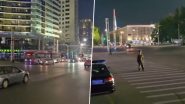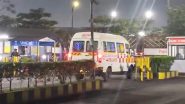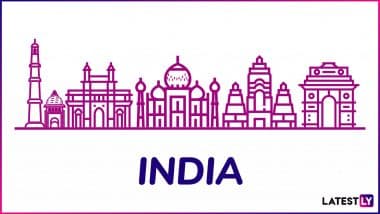Chandigarh, Nov 26 (PTI) The CAG report, tabled in the Haryana assembly on Tuesday, has brought out shortcomings in the procurement of medicines and equipment such as delay in the processing of the indents and award of rate contract to ineligible firms.
The Comptroller and Auditor General of India's report for the year ending March 2018, tabled in the special session to mark Constitution Day, also said audit collection of samples and laboratory analysis of medicines in Ambala, Kurukshetra and Panchkula districts brought out that out of a total of 1,846 licensee units, samples were drawn from only 314 units and 1,532 units remained unchecked.
"Sample analysis reports in case of 53.45 per cent samples were issued after a delay of more than six months, and where sample was found not of standard quality, action for recalling and issuing alert was initiated with inordinate delay which was fraught with the risk of consumption of substandard drugs by public," the report stated.
Destruction of substandard drugs was not monitored and subsequent batches were not checked, it said.
"Risk of manufacturing, distribution and sale of substandard drugs was high with serious implications for health and even lives of general public," the report said.
On the shortcomings in procurement of medicines, it said "there were shortcomings in procurement of medicines and equipment such as delay in processing of the indents, award of rate contract to ineligible firms, inadequate price comparison leading to extra expenditure of Rs 1.25 crore and non-levy of penalty of Rs 1.09 crore for non-supply of medicines".
Besides, availability of medicines at medical facilities was inadequate.
"Procedure followed for local purchase of medicines was not uniform and lacked transparency. Further, equipment worth Rs 1.81 crore were lying unutilised at facilities," it said.
The CAG, in its report, also rapped the Haryana Agricultural University at Hisar, as performance audit "brought out deficiencies in financial management, manpower management and infrastructure development which impaired the ability of HAU to achieve its overall objectives.".
Highlighting "deficiencies" in working of various government departments, the report said though availability of urea was adequate yet there were systemic deficiencies.
"Buffer stock of urea was not maintained and as against the target of procuring 38.79 lakh metric tonne urea, only 17.74 LMT urea was procured," it said.
Information technology audit of e-procurement system brought out that the "e-procurement system database inducted in the state was fraught with risk of backend interventions due to non-segregation of duties between data administrator and system administrator".
"Undue favour" in granting licences by the Town and Country Planning Department to two colonisers without assessing financial adequacy led to outstanding government dues of Rs 180.58 crore, it said.
Besides, there were instances of non-initiation of action against defaulters, inadequate efforts for auction of 24,355 unalloted properties in developed sectors hampered the revenue generation of Haryana Shahri Vikas Pradhikaran or the state's urban development authority.
Also, allotment of works by the Pradhikaran without acquisition of land and failure to ensure availability of encumbrances free land for the projects, the master water supply projects in Gurugram and Sonipat remained incomplete rendering expenditure of Rs 300.76 crore idle and resulted in blockade of Rs 26.35 crore on pipes yet to be laid, the CAG report said.
Procurement of buses with higher technical specifications, without upgrading the workshop facilities/technical skills of the mechanics and non-arrangement of annual maintenance contract, led to underutilization of 317 buses out of 418 buses and consequent loss of Rs 48.81 crore.
The report also pointed out that total expenditure of Haryana state increased by 89 per cent from Rs 46,598 crore to Rs 88,190 crore during the period 2013-14 to 2017-18 while the revenue expenditure increased by 75 per cent from Rs 41,887 crore to Rs 73,257 crore during the same period.
"The revenue expenditure constituted 75 to 92 per cent of the total expenditure while capital expenditure was 7 to 15 per cent during the period from 2013-14 to 2017-18," it said.
(This is an unedited and auto-generated story from Syndicated News feed, LatestLY Staff may not have modified or edited the content body)













 Quickly
Quickly




















